Abstract
Luxembourg’s exceptionally high export-to-GDP ratio, reaching 213% in 2023, reflects its unique economic structure. The country has long been a hub for financial services, with cross-border trade playing a vital role in its economy. Historically, Luxembourg has leveraged its strategic location in Europe, robust infrastructure, and favorable tax policies to attract multinational corporations. This, combined with a strong export sector focused on goods like steel and chemicals, positions Luxembourg as an outsized player in global trade despite its small size.
Exports of goods and services (percent of GDP)
Singapore’s peak export-to-GDP ratio of 229% in 2008 highlights its transformation into a global trade and financial hub. The small island nation has relied heavily on international trade, benefiting from its strategic location, advanced port infrastructure, and favorable trade policies. Over time, Singapore’s economy has diversified beyond manufacturing to include high-value sectors like electronics, pharmaceuticals, and finance. Currently at 76.1% of its peak, the drop reflects a shift towards greater domestic consumption, a matured economy, and evolving global trade dynamics, including supply chain challenges and geopolitical factors.
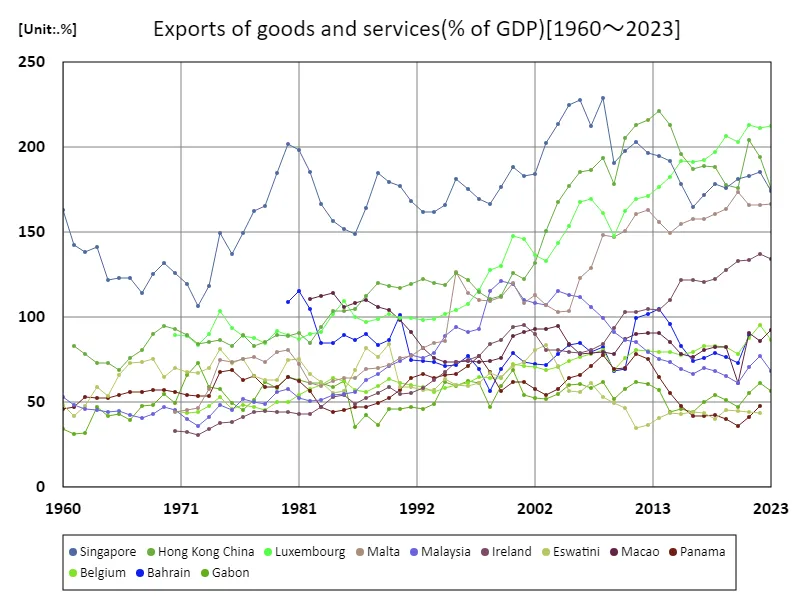

The maximum is 229%[2008] of Singapore, and the current value is about 76.1%
Exports of goods and services (% of GDP) (nations around the world)
Singapore’s record export-to-GDP ratio of 229% in 2008 underscored its role as a global trade powerhouse. Driven by strategic positioning, advanced infrastructure, and a pro-business environment, Singapore’s economy thrived on exports, especially in electronics, chemicals, and finance. However, by 2023, exports accounted for 76.1% of the 2008 peak. This decline reflects a shift towards greater domestic consumption, regional trade diversification, and global trade challenges, including supply chain disruptions and geopolitical tensions. Singapore’s trade-focused economy remains robust, adapting to evolving global conditions.
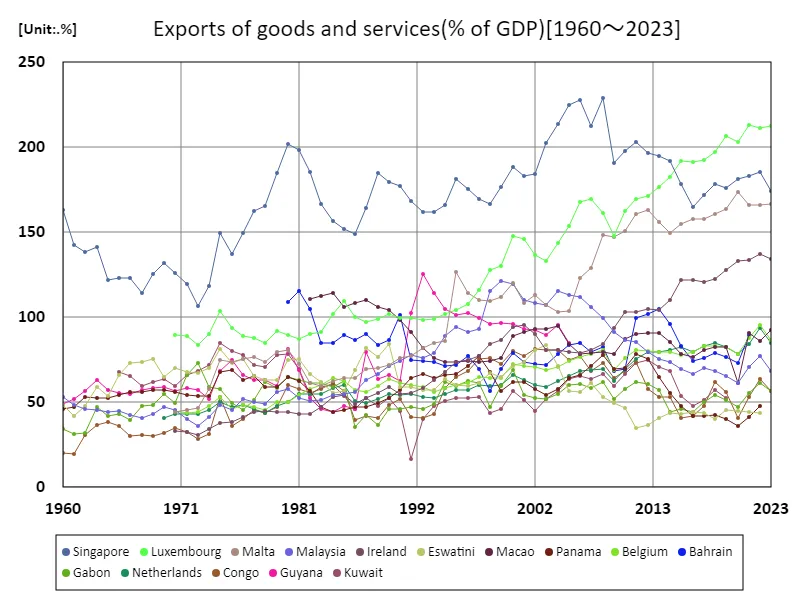

The maximum is 229%[2008] of Singapore, and the current value is about 76.1%
Exports of goods and services (% of GDP) (world countries, latest year)
Luxembourg’s export-to-GDP ratio of 213% in 2023 highlights its unique economic structure, heavily reliant on financial services and cross-border trade. The country’s high export activity is driven by its strategic position in Europe, favorable tax policies, and multinational corporate presence. The global average export-to-GDP ratio is 45.2%, reflecting diverse economies with varying degrees of trade dependency. While Luxembourg’s figures are exceptional, the overall global trend shows a gradual shift towards diversified economies with a more balanced mix of domestic consumption and international trade.
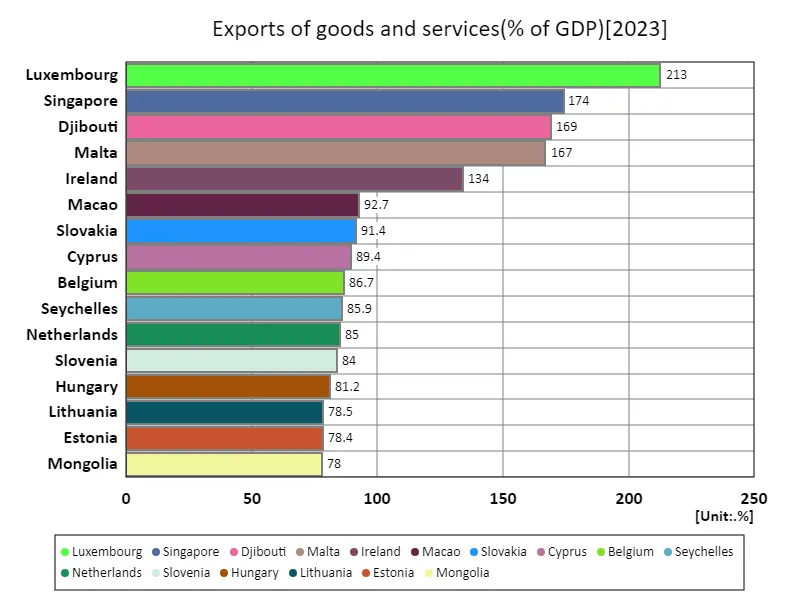

The maximum is 213% of Luxembourg, the average is 45.4%, and the total is 6.08k%
Exports of goods and services (% of GDP) (region, latest year)
In 2023, Central Europe and the Baltics led global export-to-GDP ratios at 63.2%, reflecting their strong integration into European and global supply chains. These regions benefit from robust manufacturing sectors, particularly in automotive, machinery, and electronics, along with access to the EU’s single market. The global average stands at 33.4%, indicating that many economies are less trade-dependent. The total ratio of 368% highlights the global reach of exports, with smaller, trade-intensive economies driving much of the world’s trade volume. Trends show that export reliance is rising in emerging European economies, fostering growth through external markets.
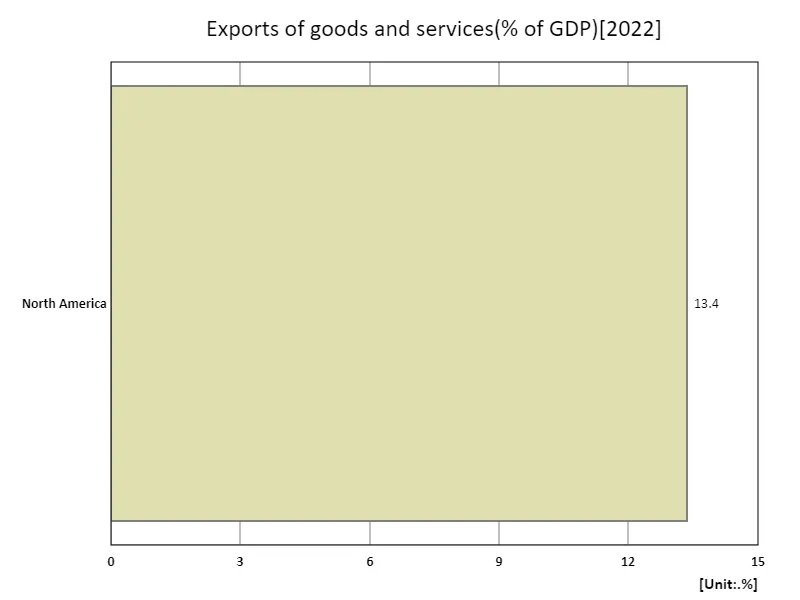

The maximum is 13.4% of North America, the average is 13.4%, and the total is 13.4%
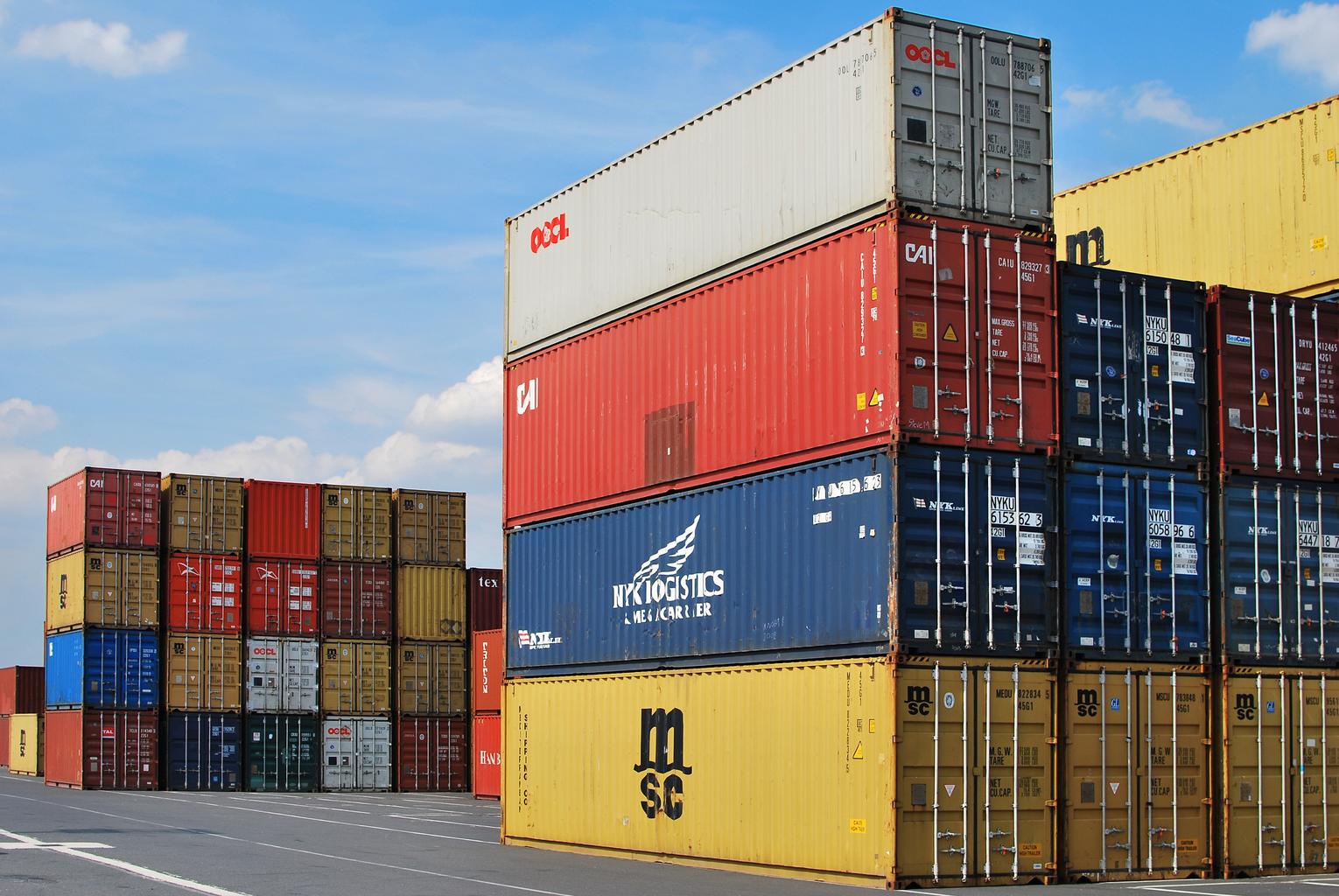


Comments